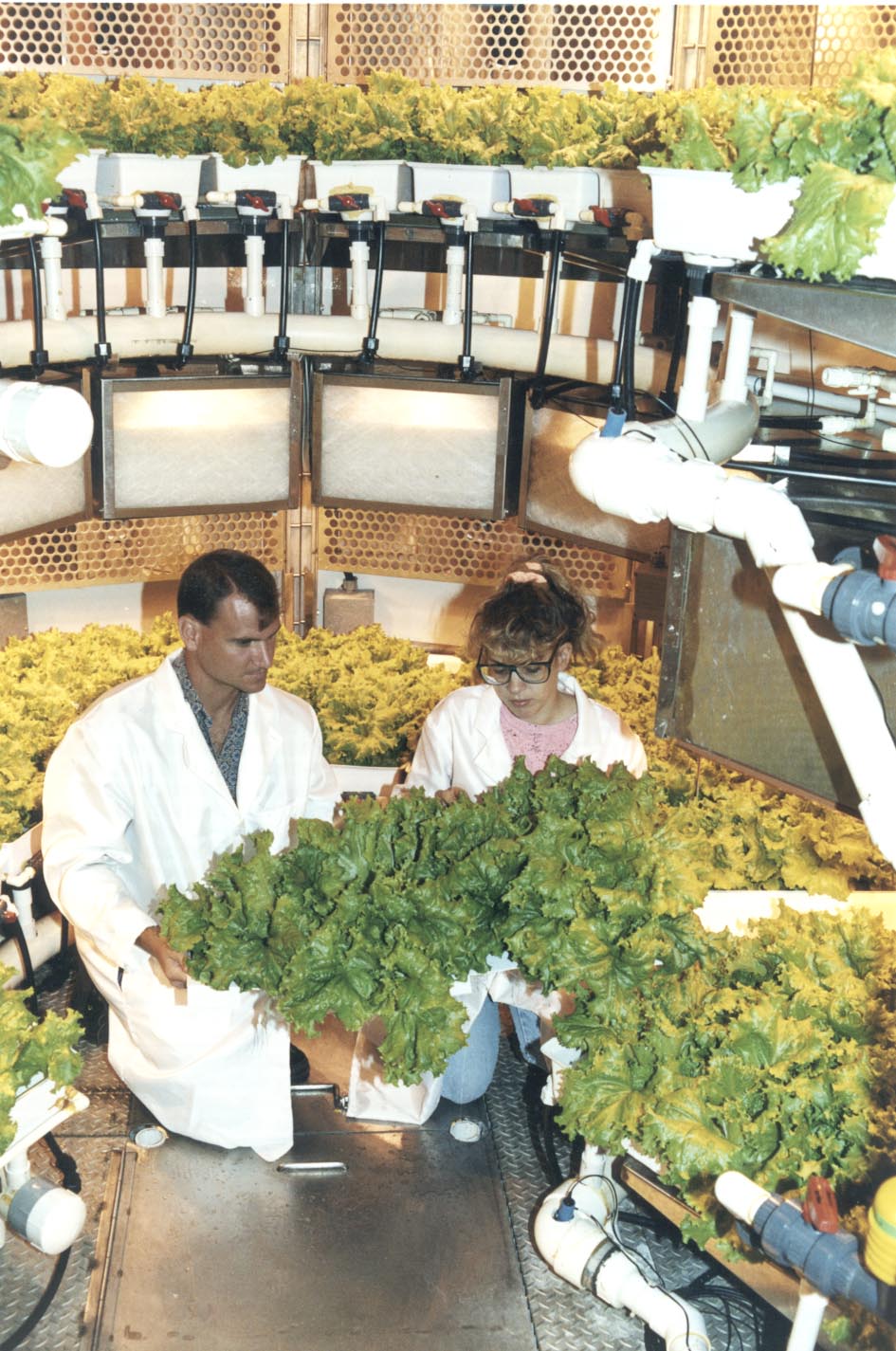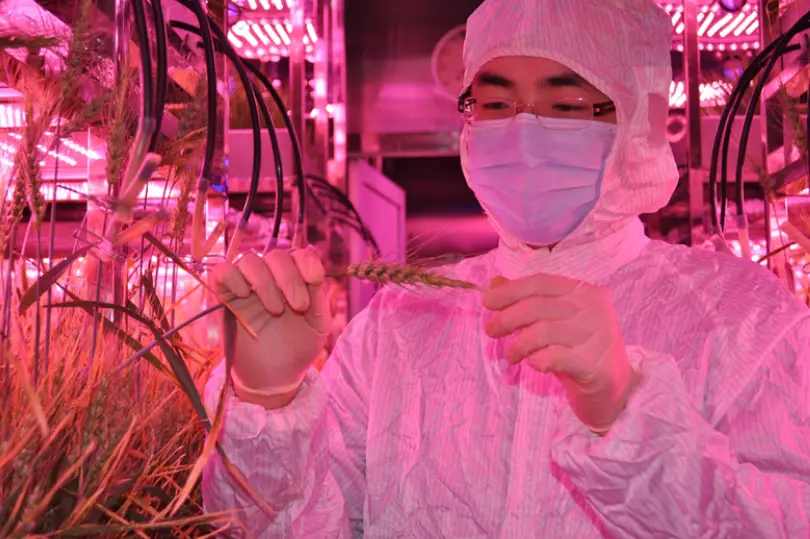
9th May 2017 Growing food in space: no longer a pipe dream A review of the progress made in space farming shows that food production on the Moon and Mars is likely to become a reality in the not-too-distant future.
Following a recent NASA bill passed by the US Congress, which authorises $19.5 billion spending for space exploration in 2017, manned missions to Mars are closer to reality than ever before. As both public and private enterprises gear up towards a return to the Moon and the first human footsteps on the Red Planet, there is a renewed focus on keeping people alive and productive in these extreme environments. Plants, and specifically crop plants, will be a major component of proposed regenerative life-support systems as they provide food, oxygen, scrub carbon dioxide, and aid in water recycling – all in a self-regenerating or 'bioregenerative' fashion. Without a doubt, plants are a requirement for any sufficiently long duration (time and distance wise) human space exploration. There has been a great deal of research in this area – research that has not only made progress towards agriculture in space, but has resulted in many Earth-based advances as well (e.g. LED lighting for greenhouse and vertical farm applications; new seed potato propagation techniques, etc.) A recent article by Dr. Raymond Wheeler from NASA's Kennedy Space Center provides an informative and comprehensive account of the various international historical and current contributions to bioregenerative life-support and the use of controlled environment agriculture for human space exploration. Covering all of the major developments of international teams, it relates some of this work to technology transfer which proves valuable here on Earth. Research in the area started during the 1950s and 60s, through the works of Jack Myers and others, who studied algae for oxygen production and carbon dioxide removal for the US Air Force and NASA. Studies on algal production and controlled environment agriculture were also carried out by Russian researchers in Siberia, beginning in the 1960s including tests with human crews whose air, water, and much of their food were provided by wheat and other crops. In the early 1980s, NASA initiated its Controlled Ecological Life Support Systems (CELSS) program with testing focused on controlled environment production of wheat, soybean, potato, lettuce and sweet potato. Findings from these studies paved the way to conduct tests in a 20 square metre, atmospherically closed chamber at Kennedy Space Center. At about the same time, Japanese researchers developed a Closed Ecological Experiment Facility (CEEF) in Aomori Prefecture to conduct closed system studies with plants, humans, animals and waste recycling systems. CEEF was much bigger than the NASA program, with 150 m2 of plant growth area, which provided a near-complete diet along with air and water regeneration for two humans and two goats. In the late 1980s, the European Space Agency MELiSSA Project began and pursued ecological approaches for providing gas, water and materials recycling for space life support, later expanding to include plant testing.
NASA's Biomass Production Chamber (pictured above) operated for 12 years, from 1988 to 2000, at Kennedy Space Center, Florida. The crops tested included wheat, potato, lettuce, soybean, tomato, rice and radish. All crops were grown using hydroponics (nutrient film technique) with higher pressure sodium and/or metal halide lamps. NASA's BPC was one of the first working examples of a vertical agriculture system. A Canadian research team at the University of Guelph started a research facility for space crop research in 1994. Only a few years later, they went on to develop sophisticated canopy-scale hypobaric plant production chambers for testing crops for space, and have since expanded their testing for a wide range of controlled environment agriculture topics. More recently, a group at Beihang University in Beijing designed, built and tested a closed life support facility called Lunar Palace 1 (pictured below), which included a 69 m2 agricultural module for air, water and food production for three humans. Then, in 2015, NASA astronauts harvested a crop of "Outredgeous" red romaine lettuce from the Veggie plant growth system, developed by Orbital Technologies Corporation (ORBITEC) for use aboard the International Space Station (see video at the end of this blog). Once again, this featured LEDs for plant growth.
As a result of these international studies in space agriculture, novel technologies and findings have been produced. This includes the first use of light emitting diodes for growing crops, the first demonstrations of vertical agriculture, use of hydroponic approaches for subterranean crops like potato and sweet potato, crop yields that surpassed record field yields, the ability to quantify volatile organic compound production (e.g. ethylene) from whole crop stands, innovative approaches for controlling water delivery, approaches for processing and recycling wastes back to crop production systems, and more. The theme of agriculture for space has contributed to, and benefited from terrestrial, controlled environment agriculture and will continue to do so into the future. There are still numerous technical challenges – but plants and associated biological systems can and will be a major component of the systems that keep humans alive when we establish ourselves on the Moon, Mars and beyond, says Dr. Wheeler. The idea of using plants to keep people alive and productive in space is not new, both in concept and in scientific inquiry. Wheeler's article covers a large portion of the historical international research effort that will be the foundation for many of the trade studies and mission design plans for use of bioregenerative life support systems in space. According to Dr. Gary Sutter, NASA's principal investigator for several spaceflight experiments designed to grow plants in microgravity: "Dr. Ray Wheeler has written a compelling and complete history of the people that have committed their careers to enabling the colonisation of space. Drawing upon his deep understanding of the programs developed, people involved, and progress achieved to highlight the accomplishments and contributions of scientists and engineers around the world to bring the vision of space exploration to fruition, he details the problems, challenges, results and contributions from the programs, and reveals how they benefited Earth, as well as space. The review underscores that the answers will be achieved not through proclamation, but through collaboration between nations, cooperation between people, and sustained commitment by institutions. His article should be required reading for anyone with even a passing interest in space agriculture." Agriculture for Space: People and Places Paving the Way is available as an open access paper in the journal Open Agriculture.
---
Comments »
|









